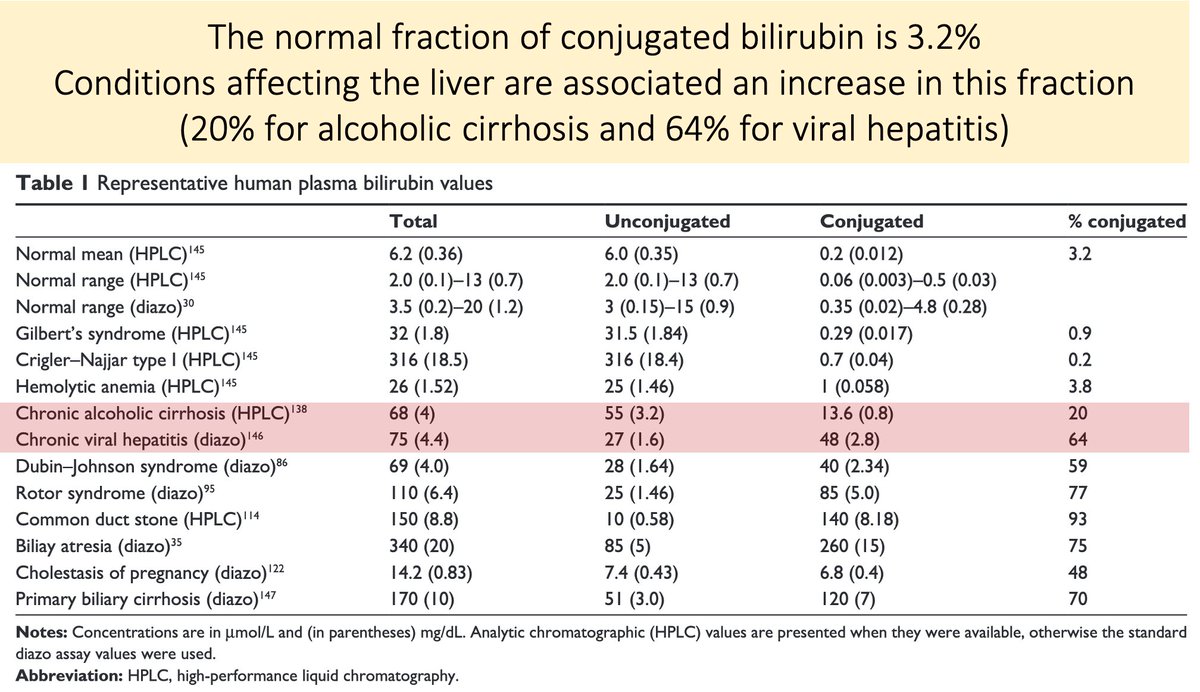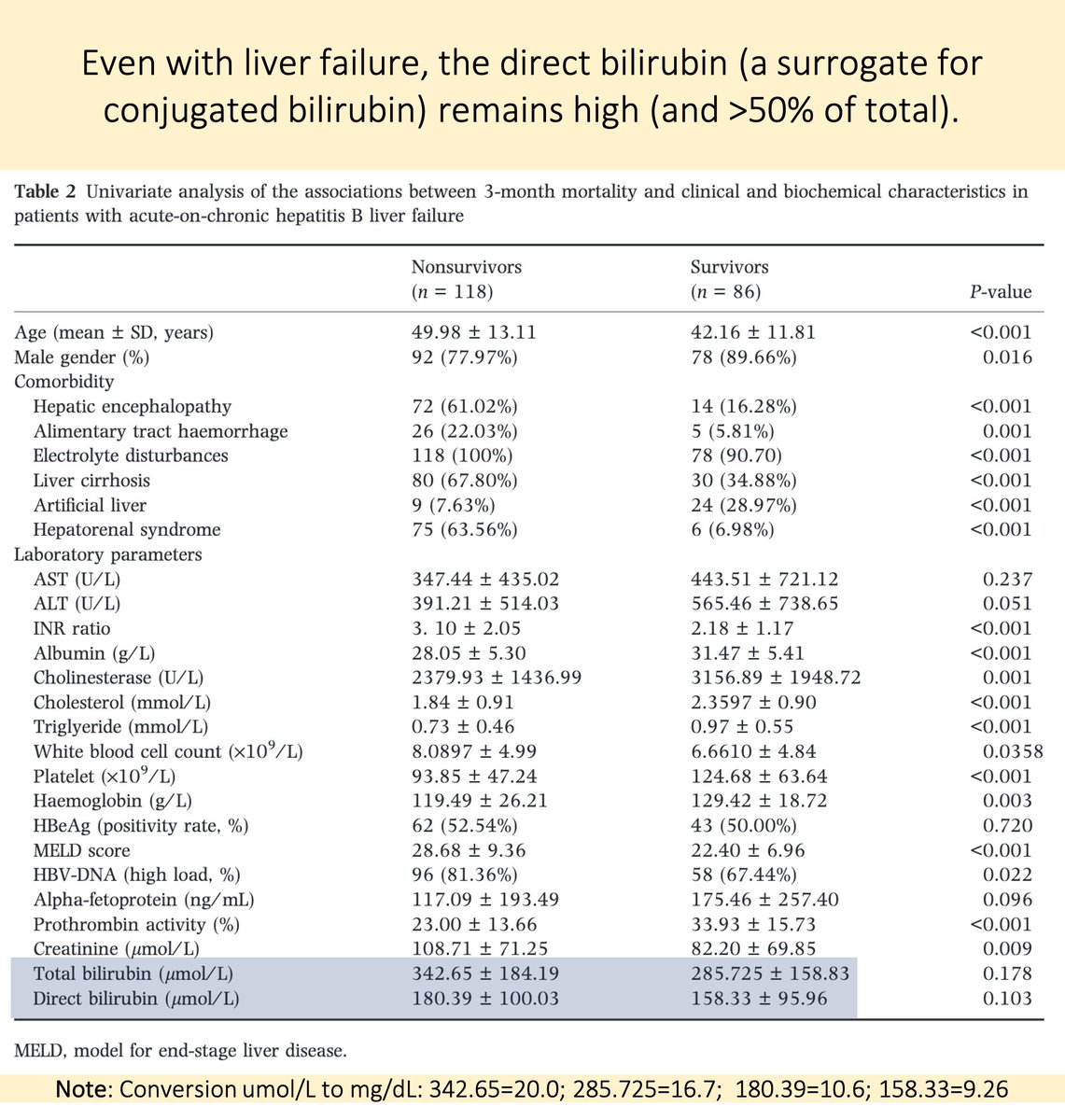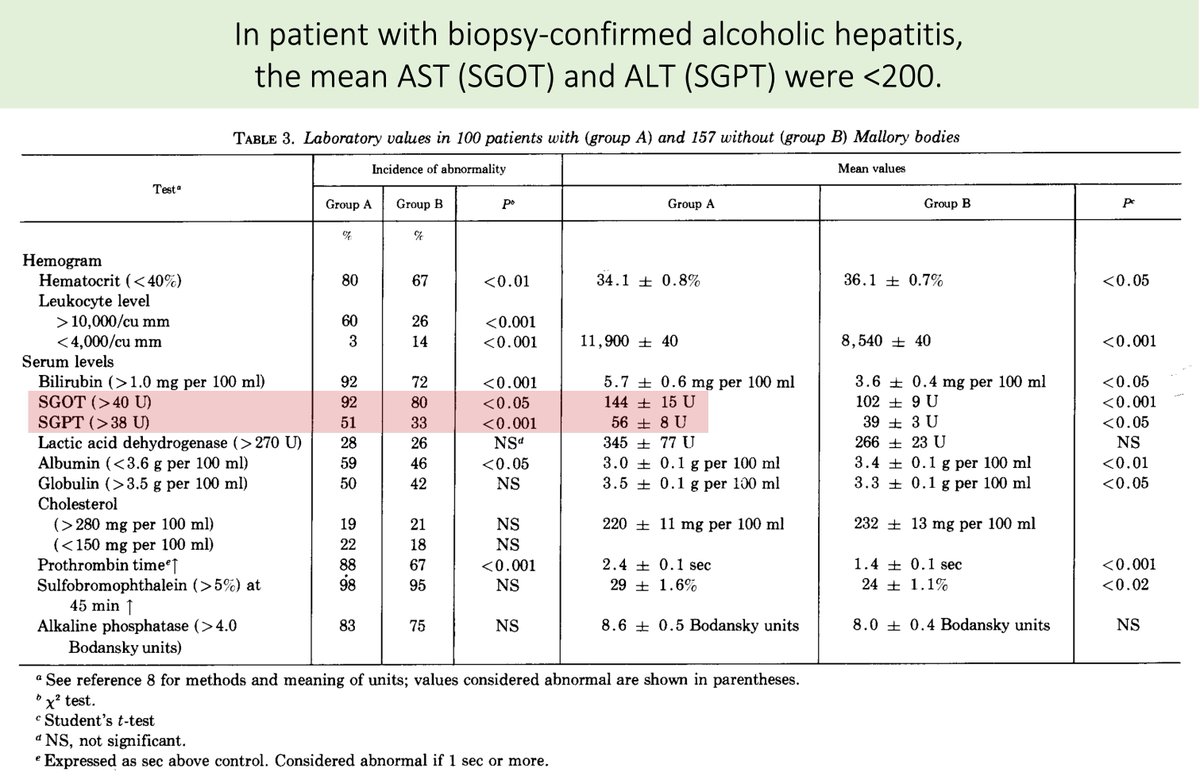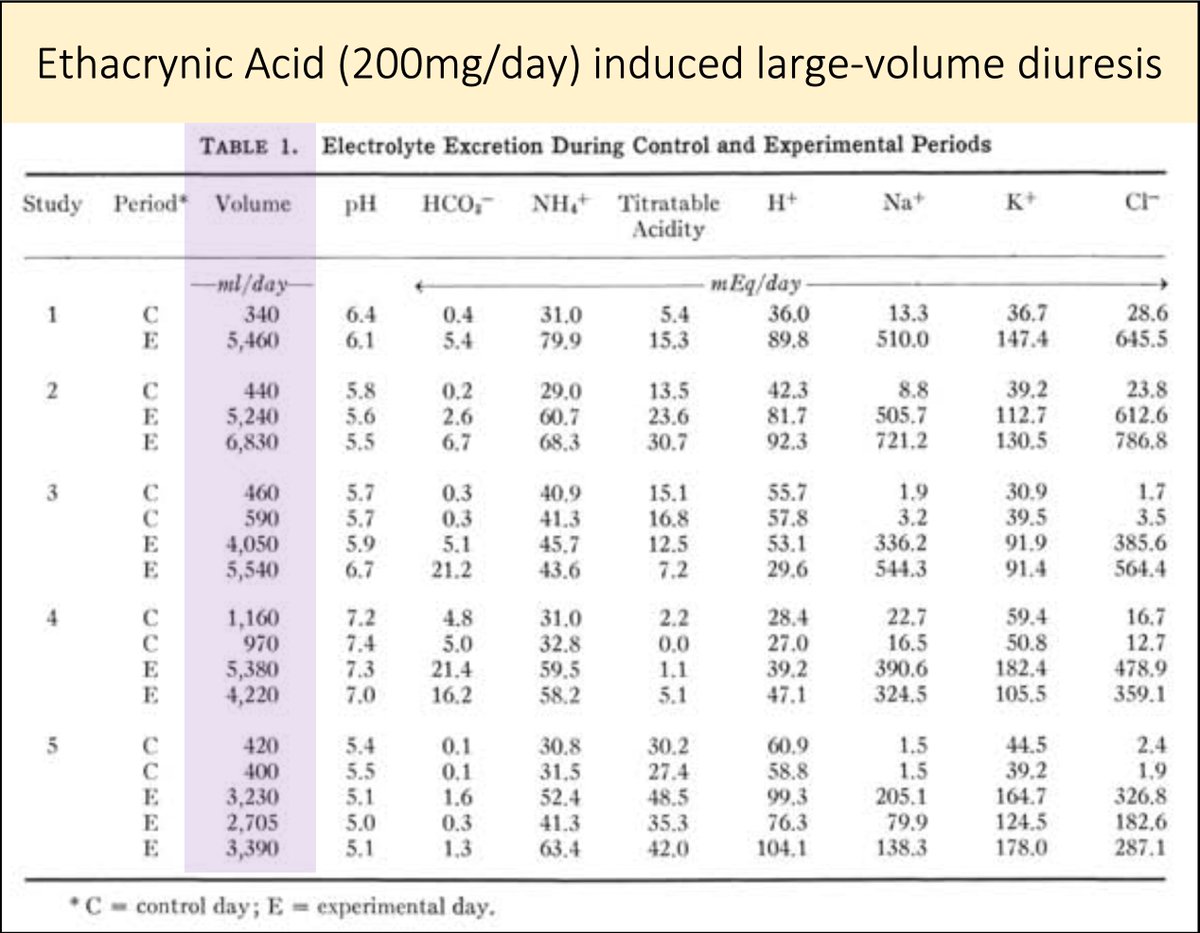Why is azithromycin considered anti-inflammatory?
Many of us have prescribed it as part of our acute COPD regimen, not just for its antimicrobial properties, but also for its anti-inflammatory properties.
Let's explore macrolides, in all their mechanistic forms…
Though the "non-antibiotic" effects of macrolides were noted in the 60s, their anti-inflammatory role didn't emerge until the 80s.
Disease: panbronchiolitis
Finding: erythromycin was associated with an increase in 10-year survival from ~40% to ~90%.
ncbi.nlm.nih.gov/pubmed/9620913
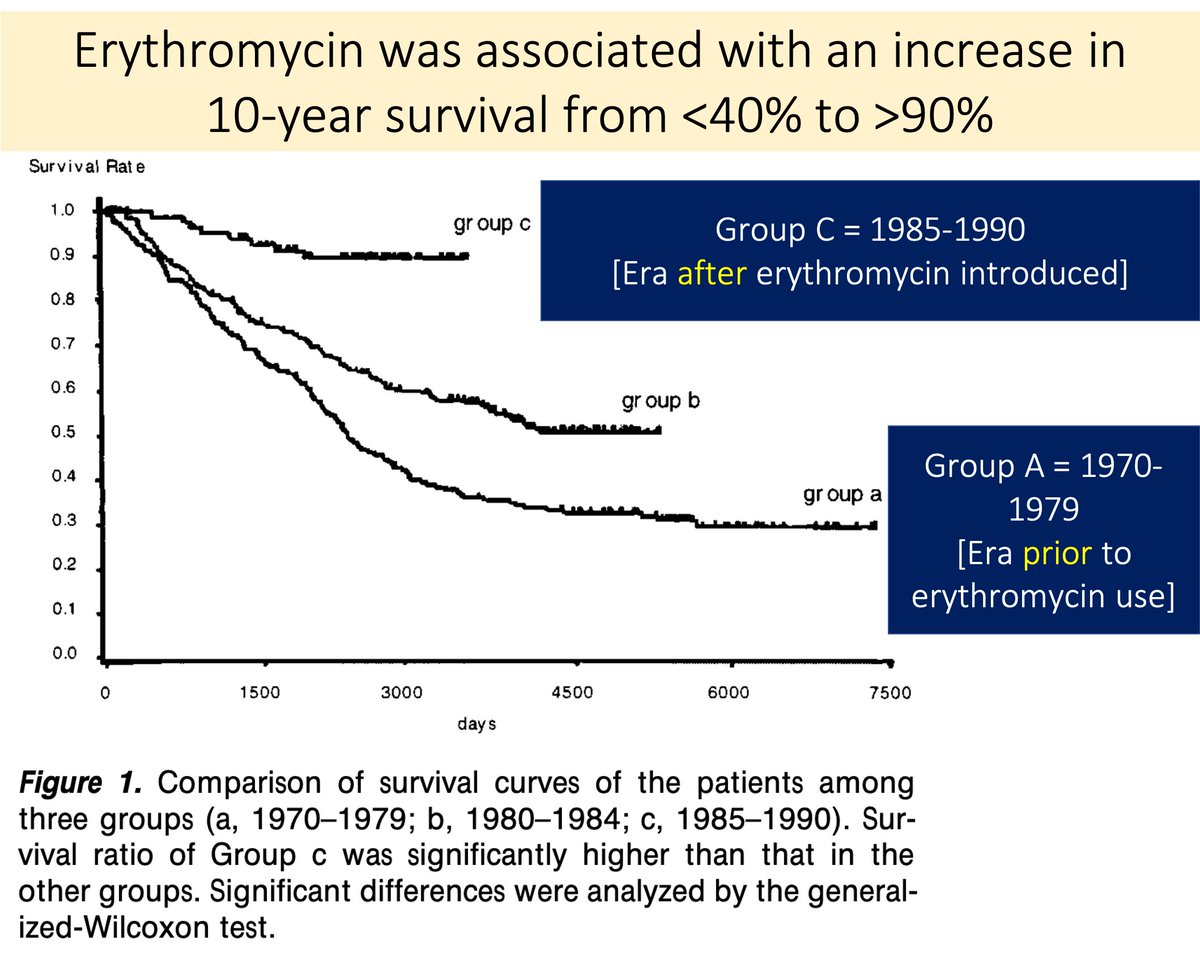
What are the purported anti-inflammatory mechanisms of macrolides?
Macrolides do A LOT of different things. For this thread, I'll concentrate on two types of effects:
🔷Pathogen Directed
🔷Immune System Directed
ncbi.nlm.nih.gov/pubmed/22778497
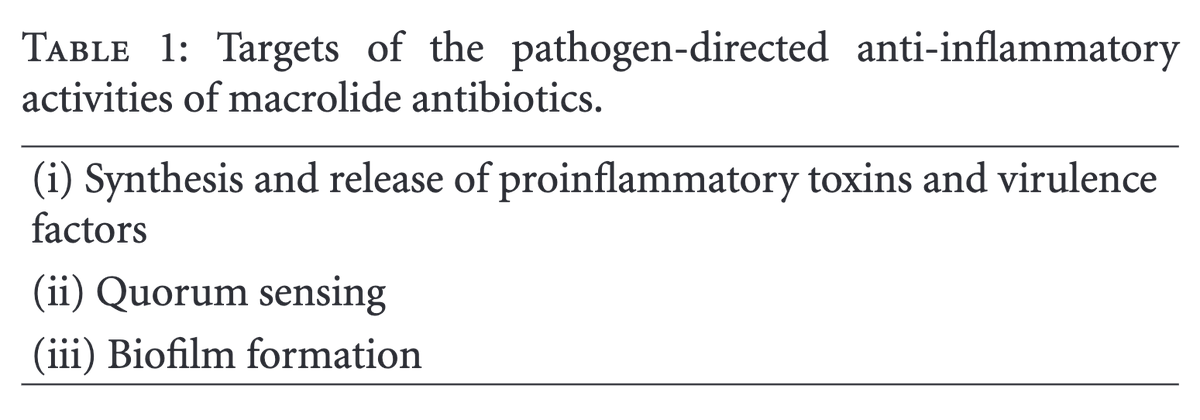
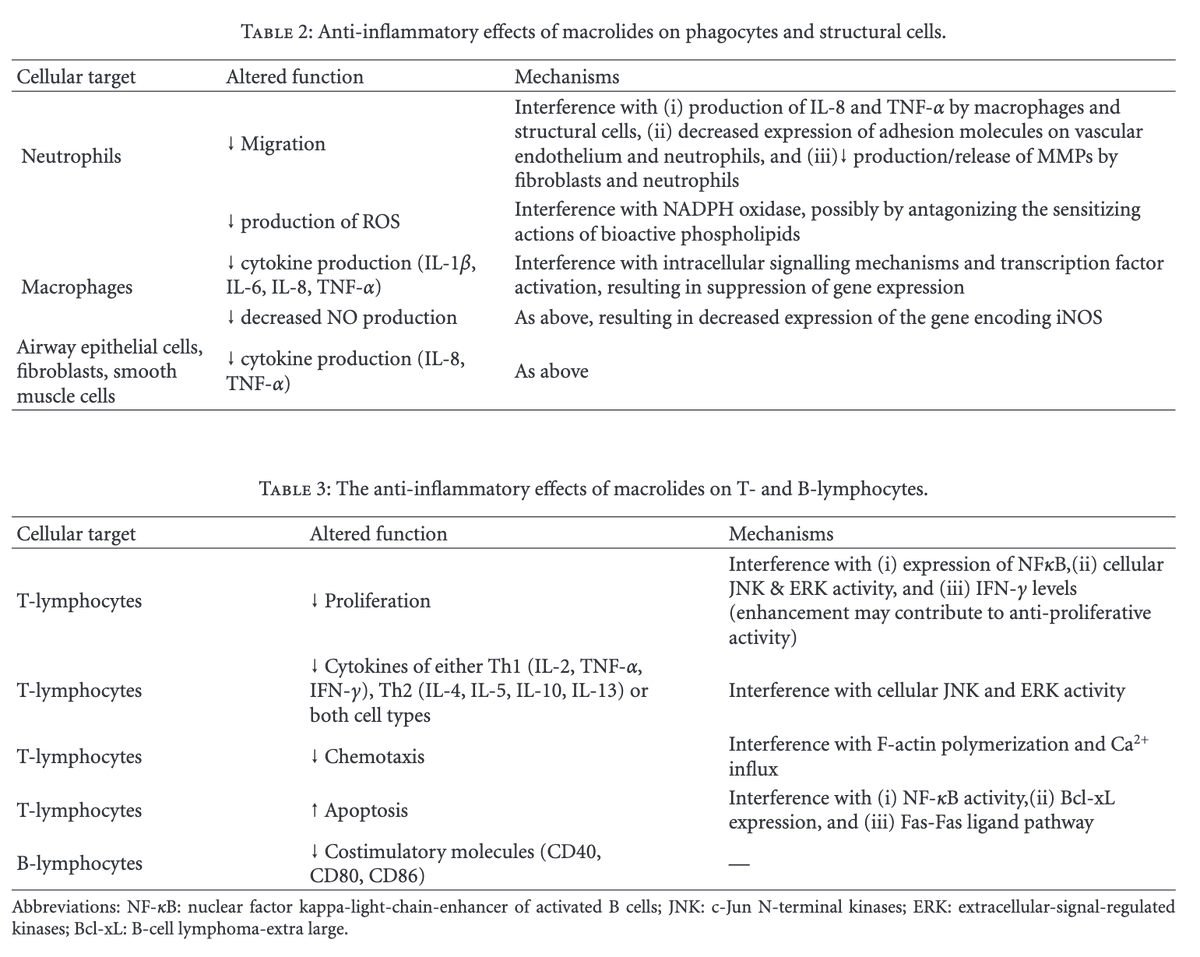
To understand the pathogen-directed mechanism recall the mechanism of action of macrolides:
↓protein synthesis via inhibition of 50S large ribosomal subunit
Unlike other antibiotics that lead to bacterial destruction (e.g. PCN), macrolides can also ↓toxin production.
Result: macrolides prevent the release of proinflammatory protein toxins and virulence factors such as bacterial adhesins and biofilm.
This can occur at sub-minimal MICs and with organisms typically resistant to macrolides (e.g., pseudomonas).
ncbi.nlm.nih.gov/pubmed/17848373
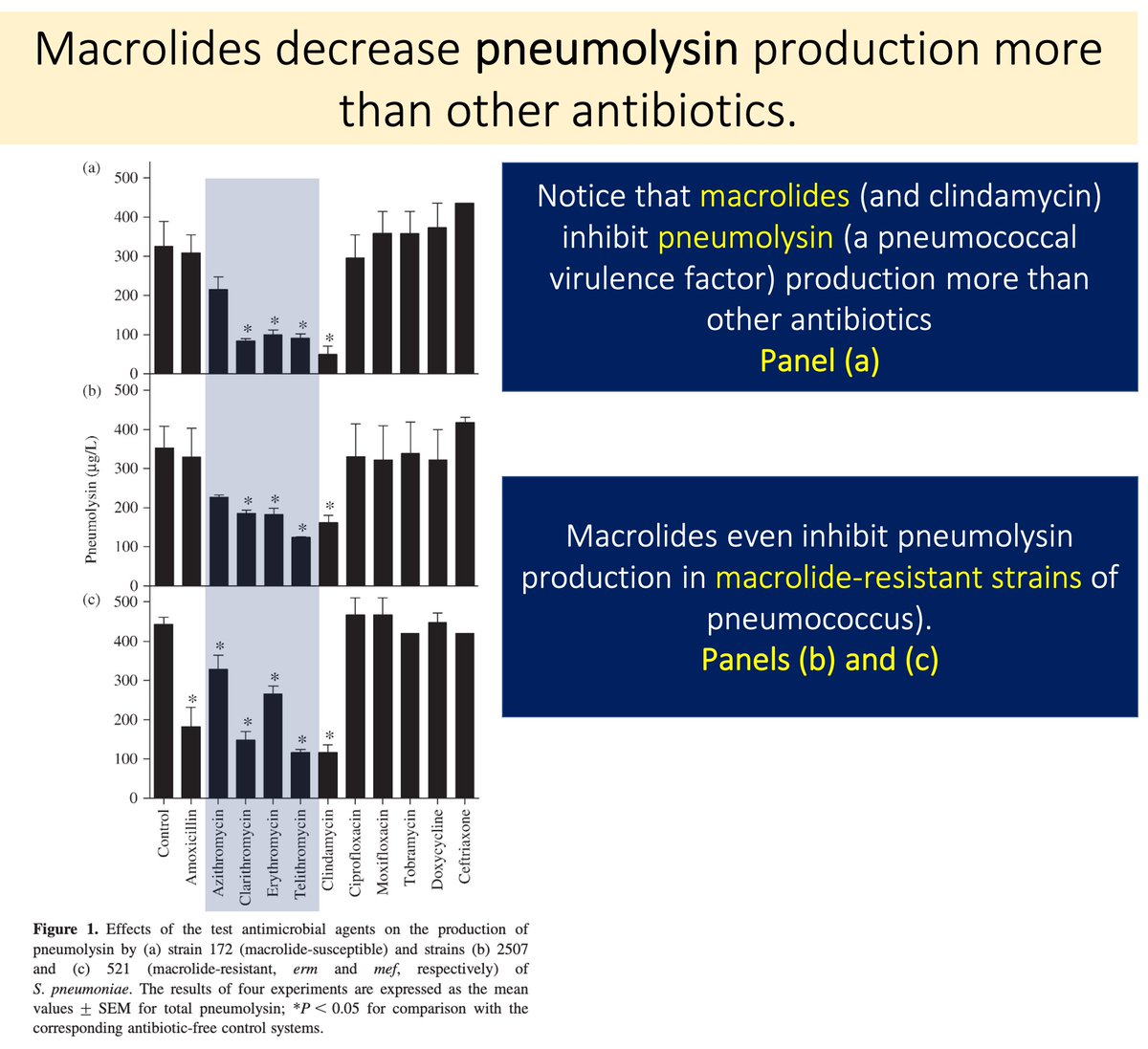
To understand the immune system-directed mechanism recall another feature of macrolides:
They accumulate inside cells, including immune cells (at concentrations 90-350x higher than in serum).
For at least 28 days!
ncbi.nlm.nih.gov/pubmed/12208321

In fact, the intensity of anti-inflammatory activity correlates with cellular accumulation.
One study found that IL-6 and prostaglandin E2 suppression were highest when the cellular concentration of the macrolide (or other compound) was highest.
ncbi.nlm.nih.gov/pubmed/21473915
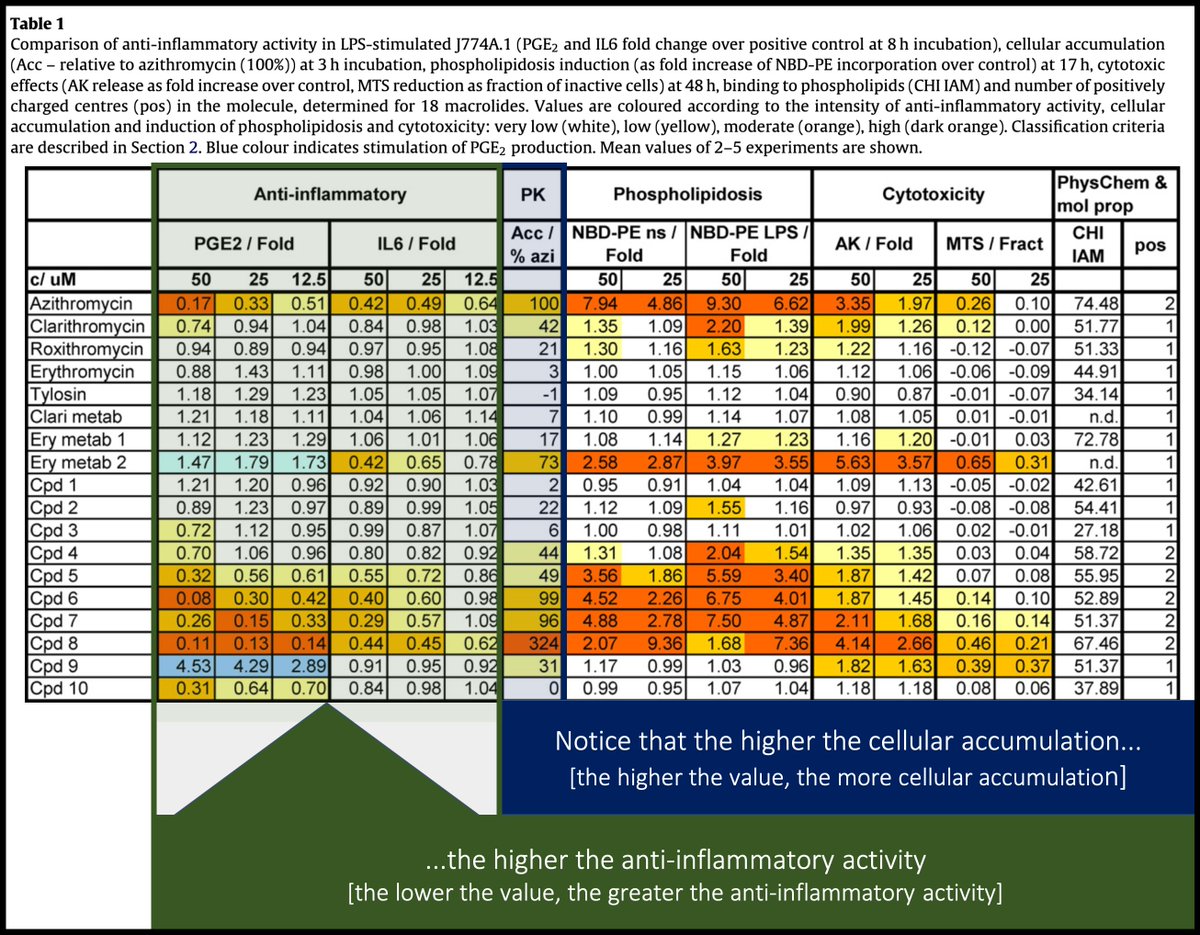
What are macrolides DOING inside cells that leads to their anti-inflammatory properties?
Again: A LOT (see pic 2 in tweet 3 for a list).
For this thread, I'll review one mechanism: suppression of IL-8.
What is IL-8?
💥a potent neutrophil chemoattractant (i.e., chemokine)💥
In patients with chronic lung disease, IL-8 leads to neutrophil accumulation in the airways and to progressive lung injury.
ncbi.nlm.nih.gov/pubmed/7927669
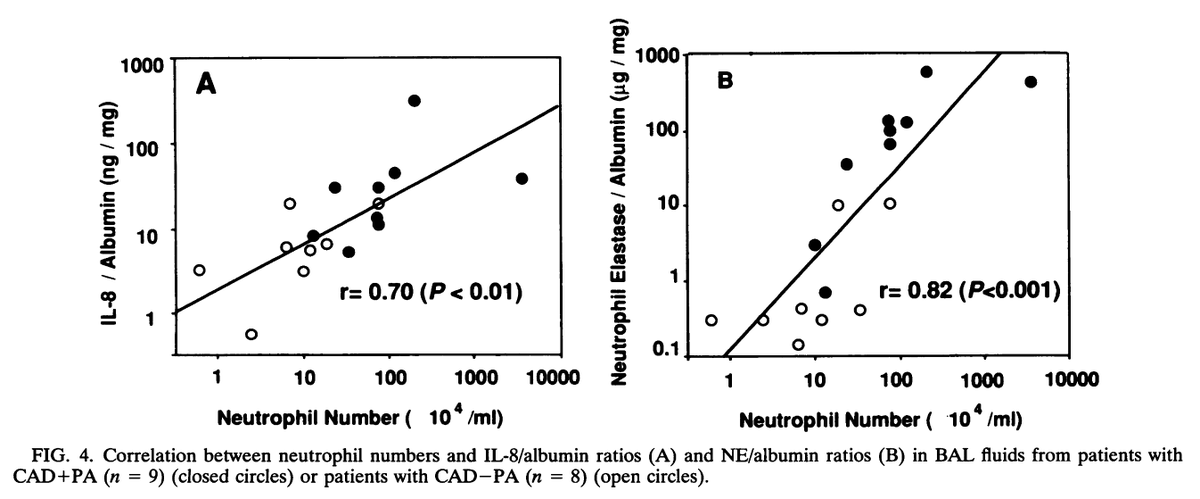
There is evidence that macrolides decrease sputum levels of IL-8 (and other inflammatory markers, like TNF-alpha).
ncbi.nlm.nih.gov/pubmed/15252191
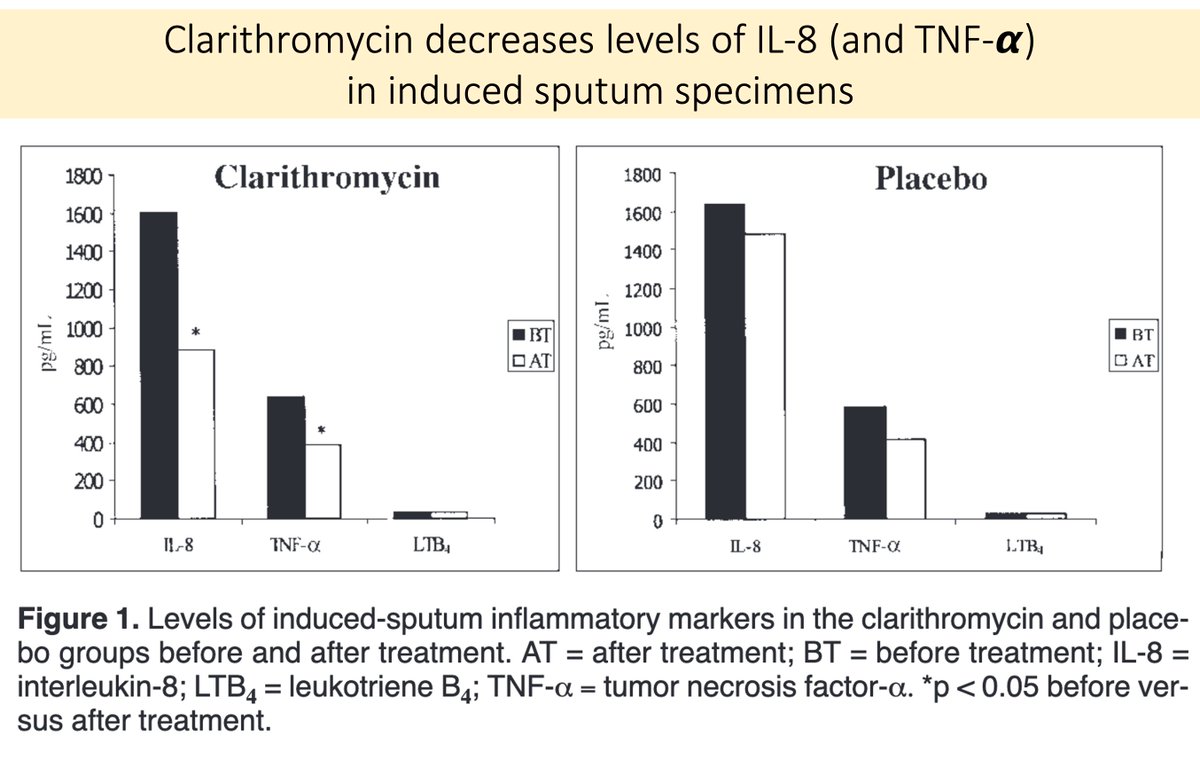
And going back to panbronchiolitis, one study found decreased neutrophil chemotactic activity and neutrophils counts in patients treated with erythromycin.
Decreased neutrophil recruitment may lead to the beneficial effects seen in tweet 2.
ncbi.nlm.nih.gov/pubmed/7924482
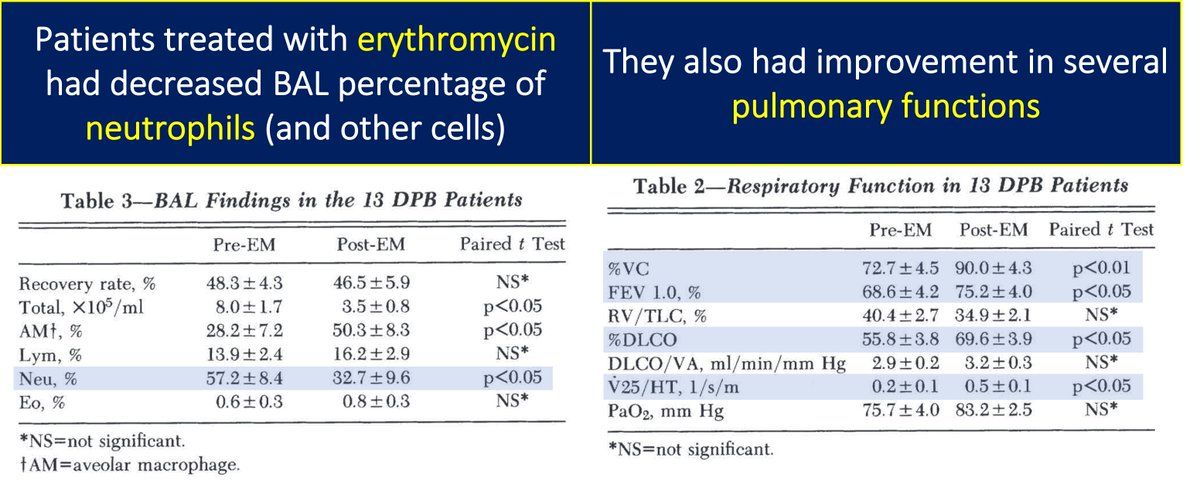
There is A LOT more to the immunomodulatory effects of macrolides. There may even be a biphasic effect:
🔷Early: stimulation of neutrophils (↑degranulation, ↑oxidative burst) and ↓IL-8.
🔷Late: ↓oxidative burst; ↑neutrophil apoptosis
ncbi.nlm.nih.gov/pubmed/24631273
If macrolides have anti-inflammatory effects, might this mechanism provide beneficial in viral infections?
Maybe.
One RCT of azithromycin in infants with respiratory syncytial virus bronchiolitis found:
↓upper airway IL-8 levels
↓days wheezing
ncbi.nlm.nih.gov/pubmed/25458910
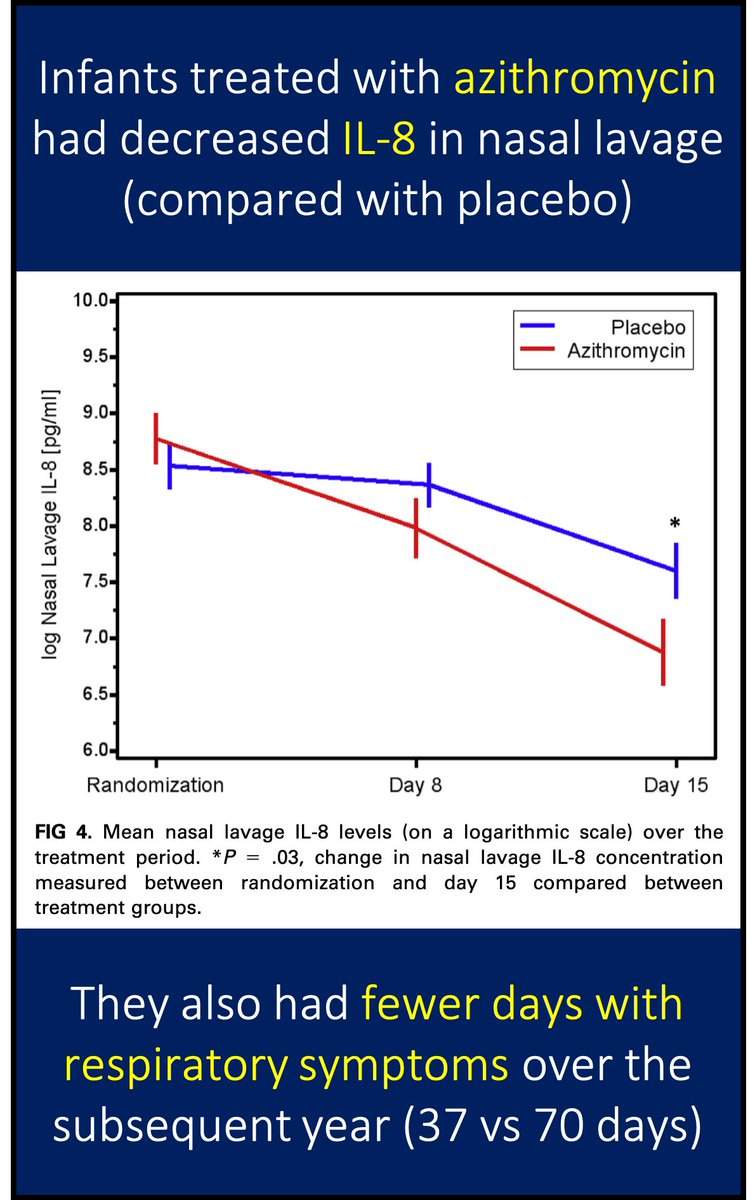
Independent of the anti-inflammatory properties, macrolides may have direct anti-viral activity.
For example, azithromycin reduced Zika proliferation in glial cells.
This may explain why some have attempted to use azithromycin for SARS-CoV-2.
ncbi.nlm.nih.gov/pubmed/27911847
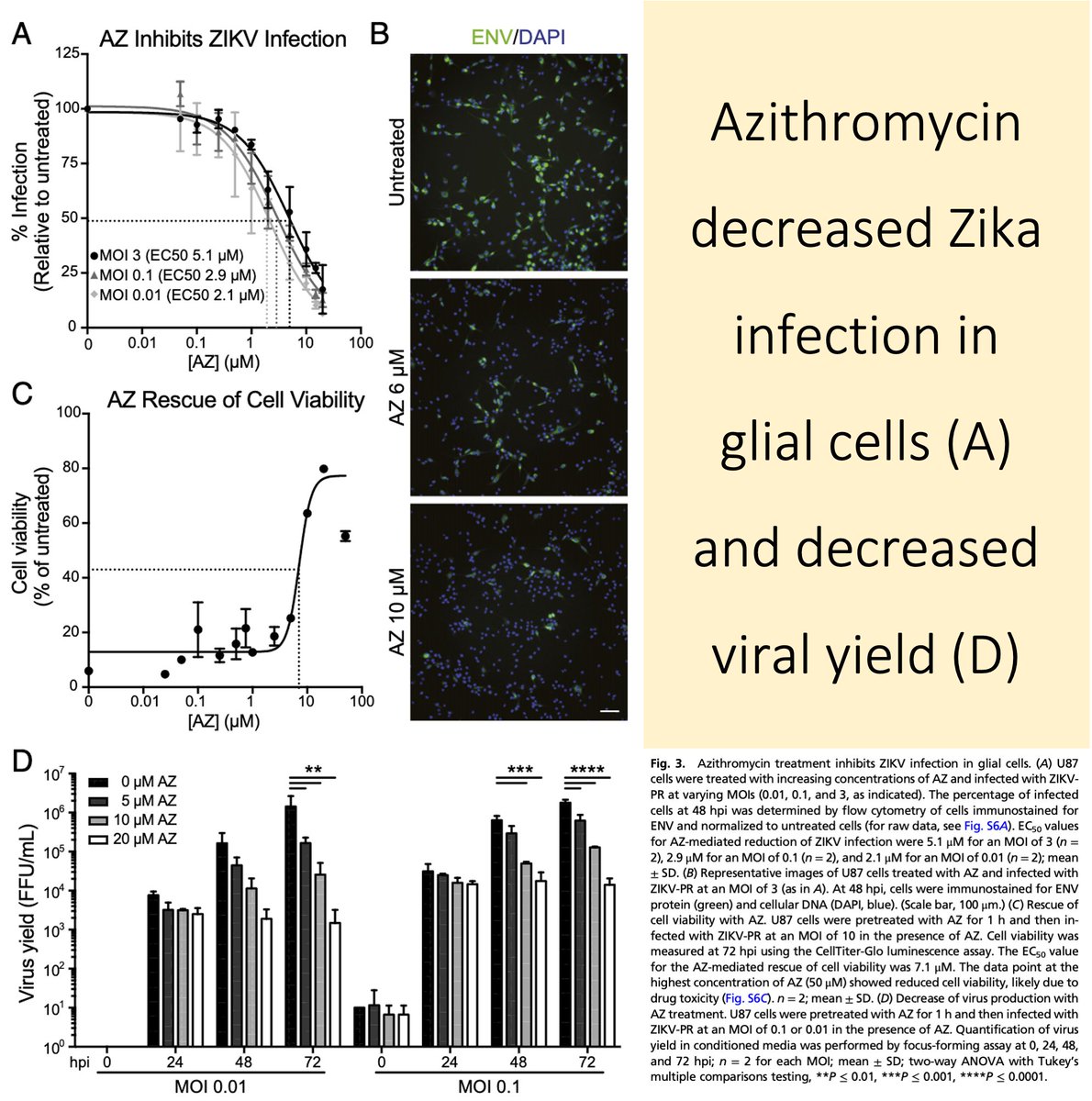
Before closing, I'll note that the anti-inflammatory properties of macrolides have, at least in part, prompted trials in:
🔷Pancreatitis [PMID 31075097] NEG study
🔷Post-op pain [PMID 11063500] POS study
🔷Cancer [PMID 25729426] Review
What am I missing?
🔑IL-8 is a chemokine that recruits neutrophils
🔑Macrolides decrease IL-8 levels in the lung
🔑This may lead to decreased inflammation
🔑There are many other anti-inflammatory and immunomodulatory effects of macrolides!


